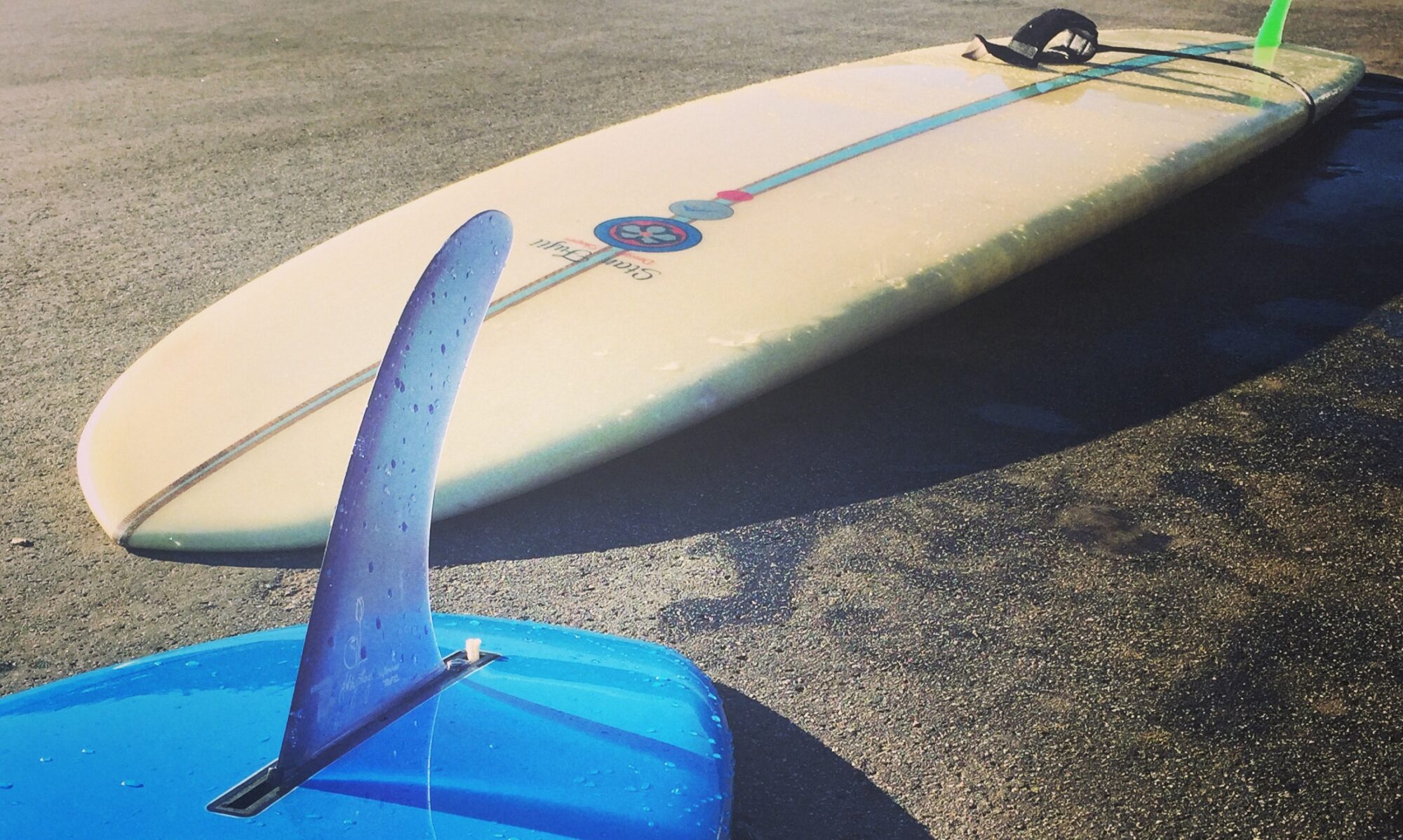Surf: 13.1 ft at 11.4 s from NW at 306° High tide.
I’ve been working hard over the last few months to overcome all the fear I was left with after last year’s bigger days. I took the breath holding class, I’ve been working on getting my confidence back little by little.
Today was a big leap. It was pretty solid out at Pleasure Point. Probably 6-8 feet, occasionally a little bigger. The tide was high so the waves were a bit gentler, but the cold cold air still packed quite a bite. There was ice and frost everywhere as we suited up.
I’d been reading Jaimal Yogis’ “The Fear Project” over the past few weeks. For me the biggest takeaways were: prepare and slow down.
Prepare for facing the thing you’re afraid of. If it’s an extreme sport: train, plan routes, study the break, work out, take a breath holding class, learn from others who have faced this before.
Slow down. One thing I’d really noticed in dealing with my fear was I kept putting myself in worse positions by either scrambling to get out of the way of a wave (using up all my energy) or being indecisive and choosing though inaction.
For me, taking this on involved a few steps:
- Admitting I was scared. Denying I was scared meant paddling out, right to the peak, and just getting clobbered again and again. Tenacity and stubbornness were getting me more of the same clobberings rather than teaching me how to deal with the situation. Admitting I was scared and using my fear to be smarter about my choices proved to be much more valuable.
- Preparing for uncomfortable situations by taking Hanli Prinsloo’s class, working out, and practicing on smaller waves helped me learn a lot about what I am capable of. I now know on a good breath I’ve got about two minutes where everything will be just fine, much longer if I can stand the discomfort and the underwater somersaults. Sure I haven’t timed a real breath hold in surf conditions, but it’s a good reminder that hey: I’ve got air.
- Slowing down when I see a wave coming and my heart sinks. I’ve tried to be more aware so I see the wave coming from farther off, decide if I can make it out and over easily or if paddling further out will just put me in the impact zone where sitting still would leave me dealing with the wash rather than the lip. If it looks like the latter, I slow down, try to stay calm, get a good breath and take the hit as calmly as I can. Being calm in the water, so far, has lead to less violent tumbling underwater. I’ve also had better luck keeping the board safely with me by being calm. The larger boards especially seem to get torn out of my hands when I’m holding them too tightly.
- Being kind to myself when I make a mistake. This one’s been pretty hard. When I first encountered this problem, I didn’t want to back down. I held myself up to this imaginary standard and felt being scared was a sign of weakness. It was a sign of weakness. It was a sign I was making some bad decisions in the water and I needed to spend more time thinking things through. But not all weakness is failure and not all failures are permanent. Going easy on myself has lead to much more improvement than forcing myself to do everything the hard way so as not to feel weak.
I realized through this process that I’d always sort of felt that other people weren’t scared. Jaimal’s book was a reminder that fear is pretty universal, some people simply practice facing it more effectively.
The results of all this?
Well, I got a bunch of overhead, fun waves today. I didn’t get clobbered. I didn’t spend the whole morning running away. There was even some spray thrown off a top turn or two.
I’m sure I’ll have plenty of heart-in-my-stomach moments and plenty of really unpleasant beatdowns, but here’s to learning to facing it a little more effectively.

